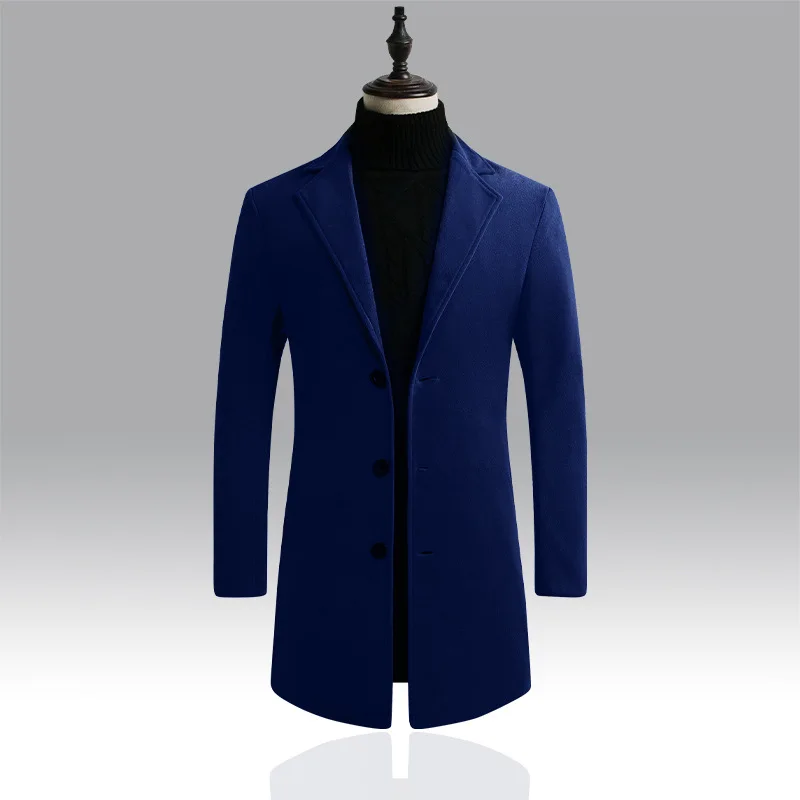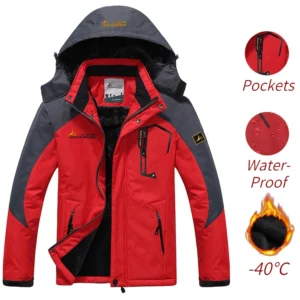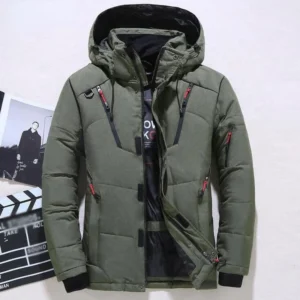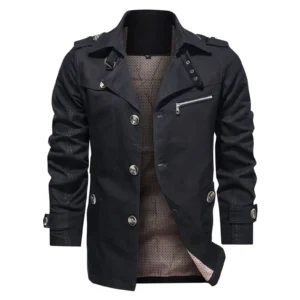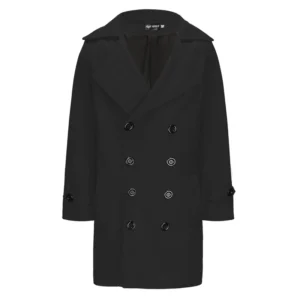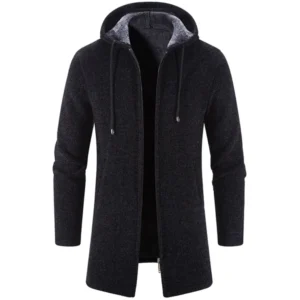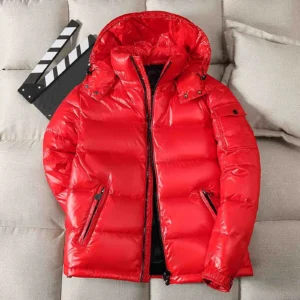Understanding Wool Types: Merino vs. Regular Wool
When selecting a quality coat, understanding the material is just as important as choosing the right coat length for your body type and style preferences. The difference between merino and regular wool can significantly impact your comfort, warmth, and satisfaction with your investment.
Merino wool comes specifically from Merino sheep, a breed that originated in Spain and is now predominantly raised in Australia and New Zealand. What sets Merino wool apart is its exceptionally fine and soft fibers. These sheep have been selectively bred over centuries to produce some of the finest wool available, resulting in fibers that are notably thinner and more flexible than other wool types.
Regular wool (sometimes called “standard” or “conventional” wool) is a broader category that includes various types such as:
- Shetland wool – from Shetland sheep, known for its warmth and durability
- Lambswool – from a sheep’s first shearing, generally softer than adult sheep wool
- Cheviot wool – from Cheviot sheep, featuring a medium thickness and good durability
- Jacob wool – from Jacob sheep, known for natural color variations
At the microscopic level, all wool fibers have a scaly structure, but merino’s scales are smaller and more numerous, contributing to its distinctive properties. Our men’s wool coats collection showcases how different wool types translate into varied coat styles and functions.
The Softness Factor: Comparing Comfort Against Skin
The most noticeable difference between merino and regular wool is how they feel against your skin. This comfort factor is measured in microns (the diameter of the wool fiber), and it makes a substantial difference in wearability.
Merino wool typically ranges from 11.5-24 microns in diameter. For perspective, a human hair is about 50-100 microns thick. The finest merino (sometimes called “superfine” or “ultrafine”) sits at the lower end of this range, creating an extraordinarily soft fabric.
Regular wool fibers are typically thicker, measuring 25-40+ microns. This larger diameter is what creates the characteristic “itch” that many people associate with traditional wool garments.
The science behind the infamous wool itch is simple: thicker fibers are stiffer and have more pronounced scale edges that can irritate skin receptors. Merino’s finer fibers bend more easily when pressed against skin, causing less irritation. This is particularly important in how warm wool coats feel in winter conditions, as the collar and cuff areas frequently contact bare skin at the neck and wrists.
The softness factor also affects how you can wear your coat. With merino wool coats, you can comfortably wear thinner underlayers or even short-sleeved shirts without discomfort. Regular wool coats often require more substantial barrier layers to prevent itching, especially for those with sensitive skin.
Warmth Properties: Insulation Efficiency Comparison
Both merino and regular wool provide excellent insulation, but they achieve warmth in slightly different ways. Wool naturally creates insulation through microscopic air pockets trapped within and between the fibers. These air pockets capture body heat, creating a thermal barrier against cold temperatures.
Merino wool has a higher warmth-to-weight ratio than regular wool. This means that for the same weight of material, merino typically provides more effective insulation. This efficiency comes from merino’s finer fibers creating more numerous, smaller air pockets.
Key warmth differences include:
- Merino wool performs exceptionally well in moderate to cold conditions but may not be as suited to extreme cold as some thicker regular wools
- Regular wool, particularly denser varieties, can provide better protection in severe winter conditions due to its greater bulk
- Merino adapts more readily to changing temperatures, making it excellent for layering
For those seeking maximum protection from harsh elements, our men’s wool overcoat collection features options designed specifically for colder climates with optimal insulation properties.
Weight and Bulk: Coat Structure and Drape
The difference in fiber diameter significantly impacts how a coat feels when worn. Merino wool coats tend to be lighter and less bulky than their regular wool counterparts while still providing comparable warmth.
Merino wool creates fabrics that drape more fluidly against the body, allowing for cleaner lines and more tailored silhouettes. This characteristic makes merino particularly well-suited for dress coats and more formal styles where a sleek appearance is desired. Understanding how a coat hangs on your frame is an important consideration when determining the ideal mens coat length guide for your body type.
Regular wool coats typically have more structure and substance. This added weight can provide a feeling of substantial quality and protection that many consumers associate with traditional winter outerwear. The structure also allows the coat to maintain its shape more readily, which can be advantageous in certain styles.
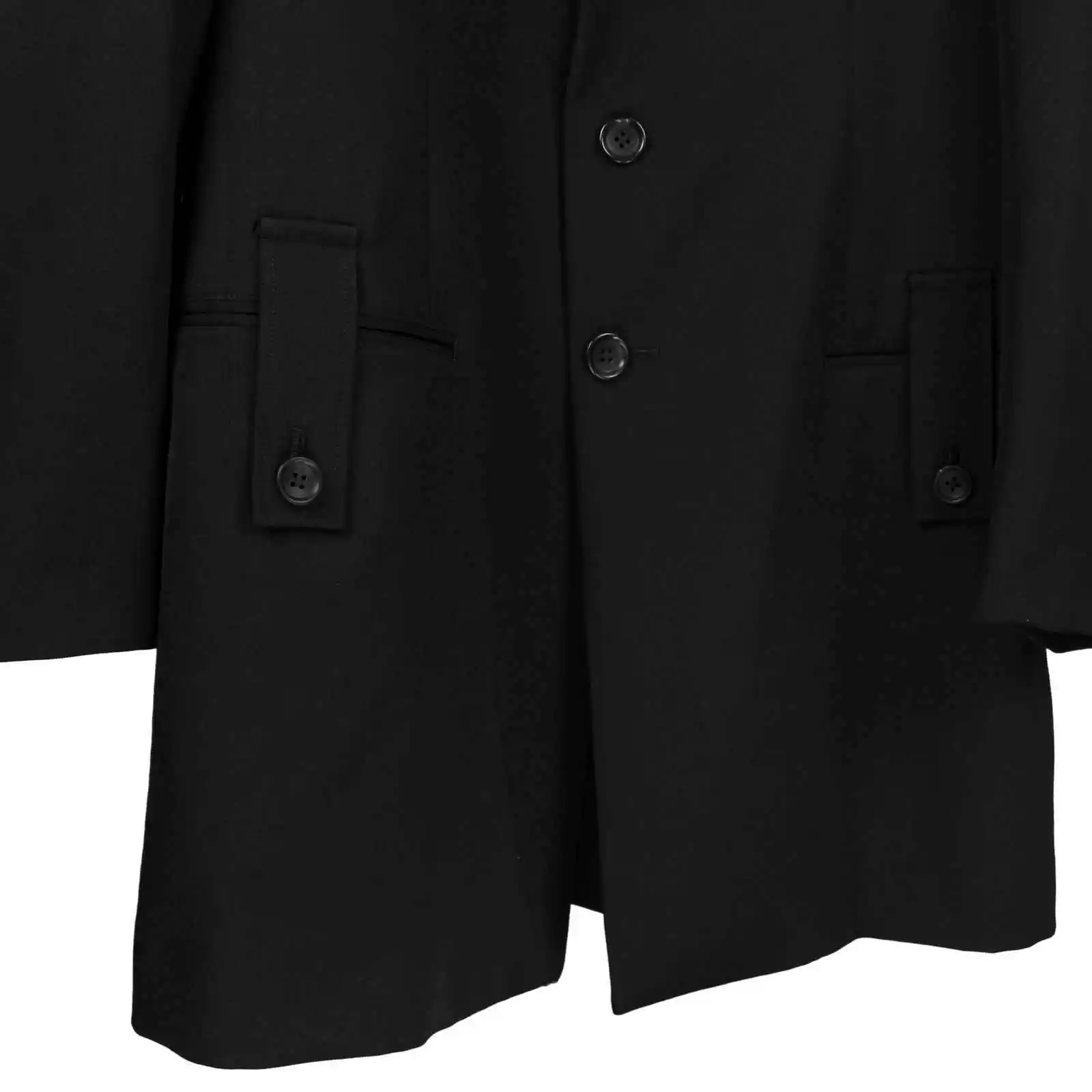
Weight considerations become particularly important depending on your lifestyle. For commuters who walk significant distances or travelers who need to pack their coats, merino’s lighter weight offers practical advantages. For those primarily driving between heated locations, the additional weight of regular wool may be less of a concern.
Moisture Management & Breathability
One of wool’s most remarkable natural properties is its ability to manage moisture, but merino wool takes this capability to another level. Both types of wool are hygroscopic, meaning they can absorb moisture from the environment, but they handle this moisture differently.
Merino wool can absorb up to 30% of its weight in moisture without feeling wet to the touch. More impressively, the absorption process generates a small amount of heat, helping to maintain warmth even when the fabric gets damp. This makes merino especially valuable in mens winter coats designed for active wear or variable conditions.
Regular wool also absorbs moisture well but typically feels damp sooner and takes longer to dry. This difference becomes significant in several scenarios:
- When moving between cold outdoors and heated indoor environments
- During light precipitation or snowfall
- When engaged in more active movement that generates perspiration
Breathability (the fabric’s ability to allow water vapor to escape) is generally superior in merino wool due to the smaller fiber diameter creating more pathways for moisture vapor transfer. This increased breathability helps regulate temperature more effectively, preventing the clammy feeling that can occur when perspiration builds up inside a coat.
Durability and Pilling: Longevity Factors
While merino wool excels in comfort and performance characteristics, regular wool often has the advantage when it comes to durability. The thicker fibers of regular wool typically have greater tensile strength, allowing them to withstand more abrasion and stress over time.
Merino wool is more prone to pilling—those small balls of fibers that can form on the surface of the fabric with wear. This is a direct result of the finer fibers, which can more easily break and tangle on the surface. However, proper care can significantly reduce pilling in merino garments.
Common wear patterns in wool coats include:
- Elbow areas, which experience frequent bending and contact with surfaces
- Cuff edges, from daily handling and contact with objects
- Collar points, from friction against neck and facial hair
- Pocket openings, from hand insertion and removal
The interaction between durability and coat design is something to consider when choosing between short vs long coats guide, as longer coats may experience different wear patterns than shorter styles.
It’s worth noting that construction quality can often outweigh the inherent durability differences between wool types. A well-made merino coat with reinforced stress points and quality stitching may outlast a poorly constructed regular wool coat, regardless of the fiber strength differences.
Odor Resistance: Staying Fresh Between Cleanings
One of wool’s most practical advantages is its natural resistance to odors, and this characteristic is present in both merino and regular wool. The science behind this property involves wool’s ability to absorb and neutralize odor molecules rather than allowing them to accumulate on the surface where bacteria can thrive.
Merino wool has a slight edge in odor resistance due to its higher efficiency in moisture management. By quickly moving moisture away from the body and allowing it to evaporate, merino creates a less hospitable environment for odor-causing bacteria. Additionally, merino typically contains higher levels of lanolin (a natural wax produced by sheep) even after processing, which has antimicrobial properties.
For coats, this odor resistance means:
- Less frequent need for cleaning, which extends the garment’s lifespan
- Maintained freshness during extended wear periods
- Better performance in daily urban environments with various odor exposures
- Particular benefits for travel when laundering options may be limited
While all wool coats benefit from these properties, the superior breathability of merino makes it particularly effective at staying fresh between cleanings.
Price Differences: Is Merino Worth the Investment?
Merino wool coats typically command a 20-40% premium over comparable regular wool options, raising the question of value for consumers. Several factors contribute to this price difference:
- Production complexity – Merino sheep produce less wool per animal than many other breeds
- Processing requirements – The finer fibers require more careful handling during manufacturing
- Quality control – Maintaining consistent fineness requires more rigorous sorting and testing
- Market positioning – Merino is often marketed as a premium material, further elevating prices
When considering the long-term value proposition, evaluate:
- Comfort priority – How important is the absence of itchiness to your wearing experience?
- Usage patterns – Will you wear the coat directly over lightweight clothing?
- Climate considerations – Do you need excellent temperature regulation or maximum warmth?
- Style preferences – Do you prefer a more draping silhouette or structured appearance?
For those seeking a middle ground between price and performance, mens wool blend coat options can offer some merino characteristics at a more moderate price point by combining wool types or incorporating synthetic fibers.
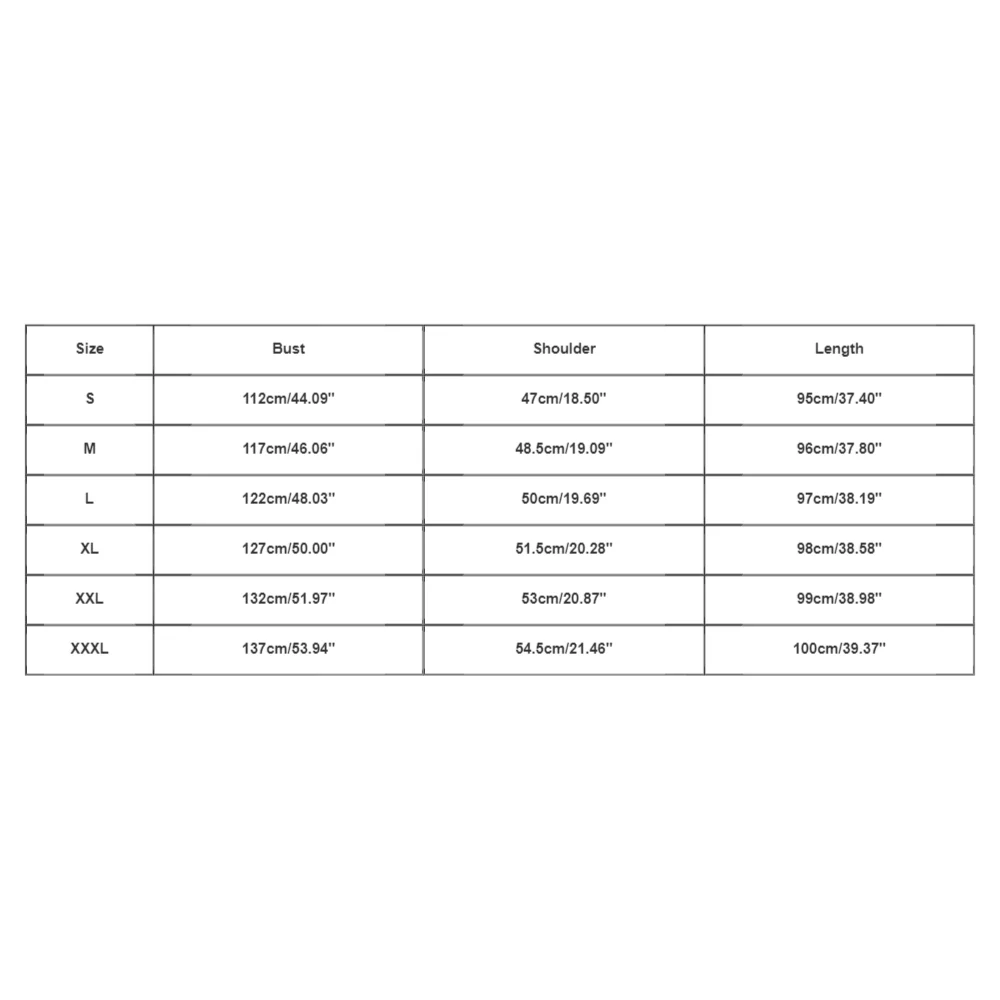
Care and Maintenance: Keeping Your Wool Coat in Prime Condition
Proper care significantly extends the life of any wool coat, though there are some differences in maintenance requirements between merino and regular wool.
General care guidelines for all wool coats:
- Brush regularly with a soft clothing brush to remove surface dirt and debris
- Air out after wearing before storing to release moisture and odors
- Use cedar blocks or lavender sachets rather than mothballs for storage
- Address stains promptly with appropriate wool-safe spot treatments
- Limit exposure to direct sunlight during storage to prevent fading
Merino wool-specific considerations:
* May require more gentle handling during cleaning due to finer fibers
* Often benefits from more frequent light brushing to prevent pilling
* Generally requires less frequent washing due to superior odor resistance
Regular wool-specific considerations:
* Can typically withstand slightly more aggressive brushing when needed
* May require more attention to moth prevention due to higher keratin content
* Often benefits from professional cleaning at the end of each season
Understanding proper seasonal storage is particularly important when considering the perfect winter coat length guide for your climate and needs, as longer coats require more careful storage attention.
How to Identify Quality: What to Look for When Shopping
Distinguishing between merino and regular wool—and identifying quality in either—requires attention to several key indicators:
Visual and tactile assessment:
* Merino typically has a smoother, more uniform appearance
* Regular wool often shows more visible fiber variation and texture
* Merino feels noticeably softer against sensitive skin areas like the inner wrist
* Quality wool of either type should have minimal shedding when gently rubbed
Label terminology to understand:
* “Pure new wool” – virgin wool that hasn’t been recycled
* “Worsted” – wool that has been combed to align fibers, creating smoother fabric
* “Micron count” – lower numbers indicate finer, softer wool
* “Super” designations (Super 100s, 120s, etc.) – indicates fineness, with higher numbers being finer
Construction quality checklist:
* Fully lined sleeves for easier on/off and protection of the wool
* Pattern matching at seams, particularly at visible areas
* Reinforced button attachment and buttonholes
* Collar that lays flat when up or down
* Even, tight stitching with no loose threads
Remember that blends will affect performance characteristics, with higher wool percentages generally providing better temperature regulation and odor resistance.
Practical Decision Guide: Which Coat for Which Scenario
Choosing between merino and regular wool becomes clearer when considering specific use cases:
For business professional environments:
* Merino advantages: Sleeker drape, less bulky under suit jackets, comfortable against dress shirts
* Regular wool considerations: More structured appearance, potentially greater durability
For casual everyday wear:
* Merino advantages: Comfort against various underlayers, adaptive warmth for indoor/outdoor transitions
* Regular wool considerations: Often more wind-resistant, generally lower maintenance
For extreme weather conditions:
* Merino advantages: Better performance when active, excellent layering capability
* Regular wool considerations: Typically more robust protection in severe cold, especially in insulated wool overcoats

Climate-based considerations:
* Humid cold regions: Merino’s moisture management excels
* Dry, severe cold: Regular wool’s substantial weight often provides better wind blocking
* Variable conditions: Merino’s adaptability offers advantages
* Rainy regions: Either type benefits from water-resistant treatment
Mens Heavy Winter Coat, Mens Insulated Coat, Mens Parka Coat
Price range: $175.52 through $237.36 Select options This product has multiple variants. The options may be chosen on the product pageMens Big and Tall Winter Coats, Mens Down Coat, Mens Hooded Winter Coat, Mens Puffer Coat
Price range: $126.44 through $217.01 Select options This product has multiple variants. The options may be chosen on the product pageMens Big and Tall Winter Coats, Mens Hooded Winter Coat
Price range: $80.32 through $106.68 Select options This product has multiple variants. The options may be chosen on the product pageMens Double Breasted Pea Coat, Mens Wool Blend Coat, Mens Wool Pea Coat
Price range: $136.84 through $157.36 Select options This product has multiple variants. The options may be chosen on the product pageMens Cashmere Overcoat, Mens Hooded Winter Coat, Mens Wool Blend Coat
Price range: $128.72 through $139.68 Select options This product has multiple variants. The options may be chosen on the product pageMens Hooded Winter Coat, Mens Insulated Coat, Mens Puffer Coat, Mens Quilted Coat
Price range: $139.88 through $177.72 Select options This product has multiple variants. The options may be chosen on the product page
Beyond Wool Type: Other Factors in a Quality Coat
While the wool type forms the foundation of a coat’s performance, several other elements contribute significantly to the overall quality and experience:
Construction quality often outweighs material differences:
* Fully canvassed construction provides better drape and longevity than fused alternatives
* Hand-stitched details typically offer greater durability at stress points
* The quality of interfacing affects how well the coat maintains its shape
Lining materials substantially impact comfort and performance:
* Silk linings offer luxury and comfort but less durability
* Viscose/rayon provides good breathability at moderate cost
* Synthetic linings may increase wind resistance but reduce breathability
The importance of proper fit cannot be overstated:
* Even the finest wool performs poorly if the coat doesn’t fit correctly
* Shoulder fit particularly affects comfort and appearance
* Sleeve length should accommodate suit jackets when relevant
For those interested in distinctive fabric patterns beyond the basic wool type, understanding the characteristics of herringbone wool coats and other traditional weaves adds another dimension to your selection process.
Ethical sourcing has become increasingly important to many consumers, with certifications like the Responsible Wool Standard (RWS) ensuring humane animal treatment and sustainable land management practices.
Frequently Asked Questions
Is Merino wool warm enough for severe winter conditions?
Merino wool provides excellent insulation for most winter conditions, especially when layered. However, for extreme cold (below 0°F/-18°C), a heavier regular wool coat or a merino coat with additional insulation may be preferable. The key advantage of merino in cold conditions is its superior performance during activity, when its moisture management prevents perspiration from reducing insulation value.
Can I wear a regular wool coat if I have sensitive skin?
If you have sensitive skin, regular wool coats can still work well with appropriate underlayers. Look for fully lined models where wool doesn’t contact the neck or wrists, or consider regular wool coats with higher-quality, finer fibers (closer to the merino range). Testing by wearing the coat over a long-sleeved shirt for 15-20 minutes in the store can help determine comfort.
What’s the best way to prevent pilling in a Merino wool coat?
To minimize pilling in merino wool coats, gentle brushing with a soft clothing brush after wearing helps remove short fibers before they can tangle. Avoid carrying rough-textured bags or backpacks that cause friction against the coat. When cleaning is necessary, turn the coat inside out for washing or dry cleaning, and follow care label instructions precisely.
Are wool coats suitable for rainy climates?
Wool naturally repels light moisture due to the lanolin content and fiber structure. For regular rain exposure, look for wool coats with added water-resistant treatments or consider layering with a waterproof shell in heavier downpours. Wool’s advantage in rainy conditions is that it continues to insulate even when damp, unlike many synthetic materials.
How can I identify if my coat is truly Merino wool?
Besides the label, you can identify merino wool by its exceptional softness against sensitive skin like the inner wrist. Merino typically has a more uniform appearance with less visible fiber variation. The burn test (with a small, inconspicuous fiber) can also help—merino wool will smell like burning hair, self-extinguish, and leave a crushable black ash rather than melting like synthetics.
The Metro Cloak Collection: Our Approach to Wool Coats
At Metro Cloak, we believe that understanding wool types allows us to create outerwear that delivers optimal performance for different needs and preferences. Our coat collection carefully balances the properties of various wool types to match specific wearing contexts and style objectives.
We select wool based on micron count consistency, fiber length, and ethical sourcing practices. For business-oriented styles, we often utilize finer wools that deliver the refined drape and comfort needed for professional environments. For more robust winter protection, we select wool varieties with optimal insulation properties.
Our design philosophy incorporates construction techniques that enhance wool’s natural performance—from breathable back vents that improve temperature regulation to reinforced stress points that extend garment life across all wool types.

